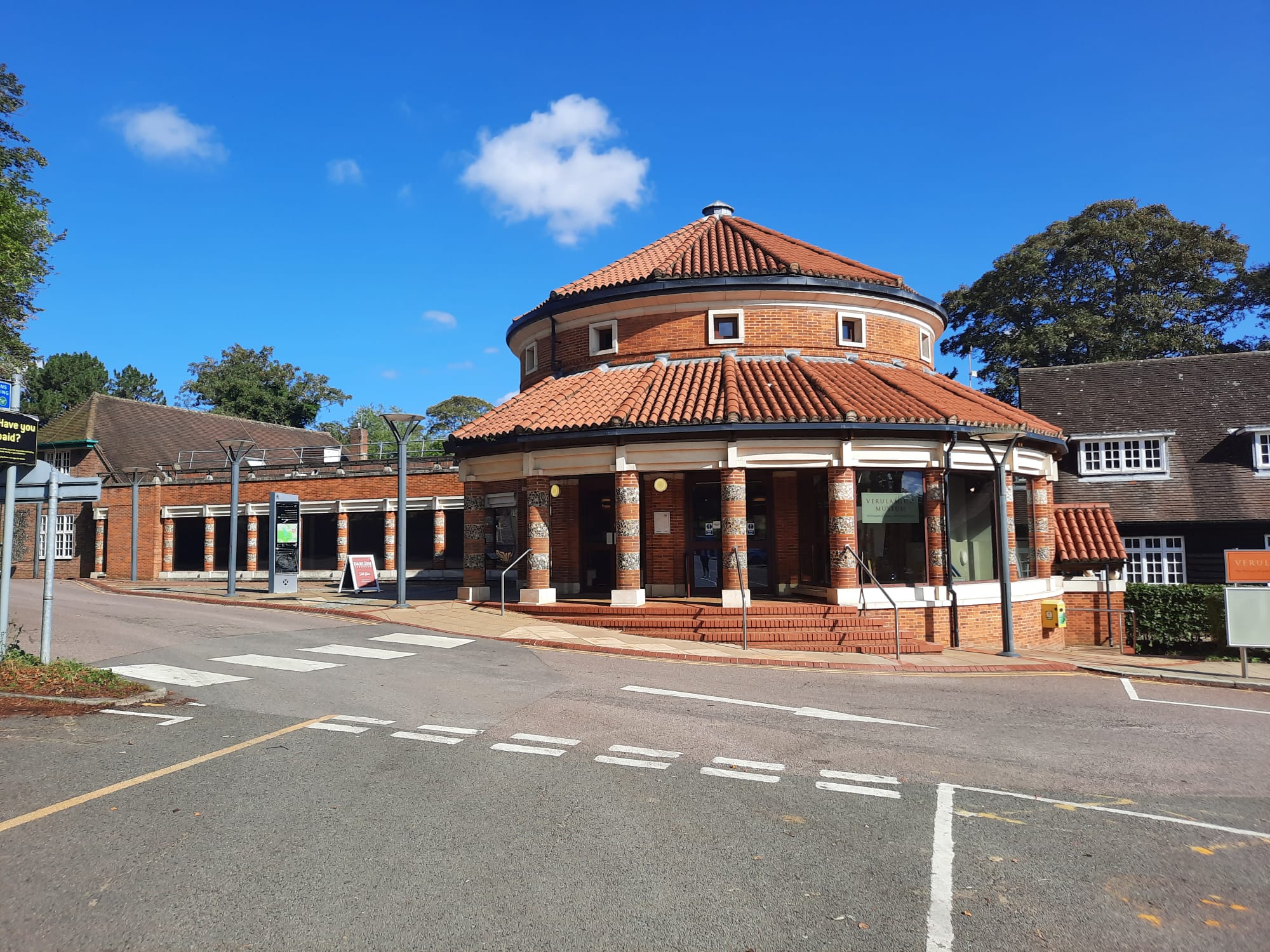Verulamium Museum & Roman St Albans
A lot of pre-Roman and Roman history to explore at Verulamium Museum, including some of the best mosaics outside the Mediterranean. The museum is just one part of a Roman day out in modern St Albans.
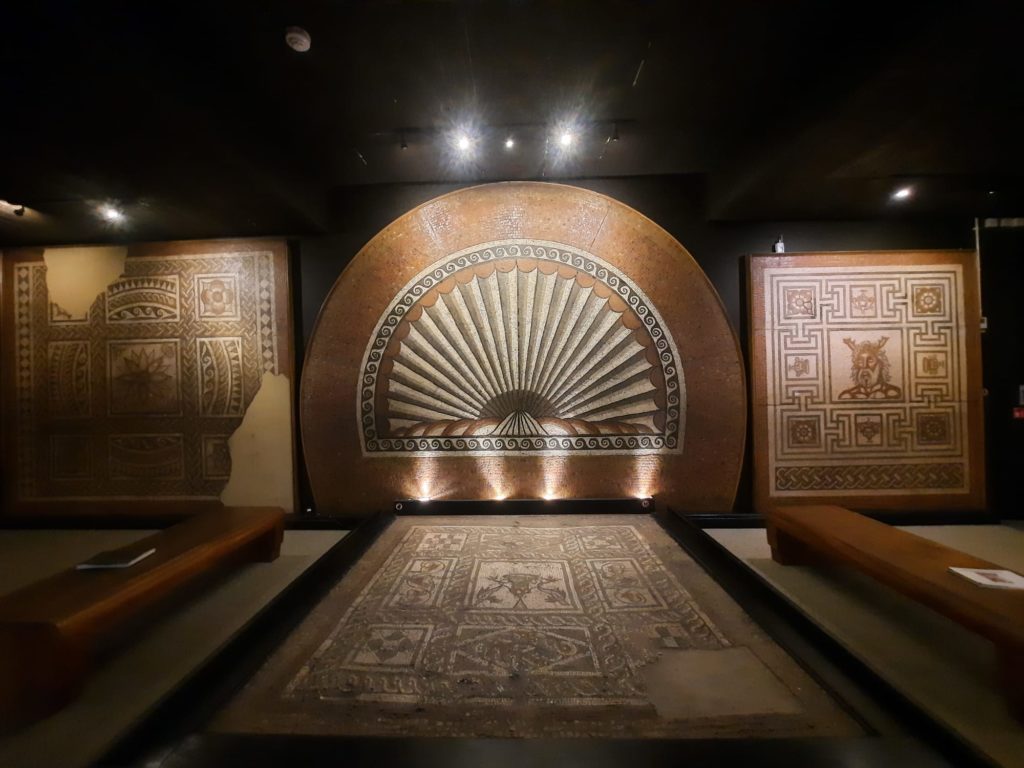
A Short History of Verulamium
The Roman city of Verulamium lies almost, but not quite, under the modern city of St Albans in Hertfordshire. Like many Roman towns and cities Verulamium took the place of an earlier tribal settlement, in this case something like Verlamion or Uerulāmion, home to Celtic Cattuvelauni people. Once the Romans arrived it grew significantly into one of the biggest cities in Britain, on the path of Watling Street from Dover to Wroxeter.
As a major Roman city, Boudicca laid waste to it in 61 CE (she had good reason to be annoyed with the Romans). Poor old Verulamium burned down a couple more times before diminishing in importance as the Roman Empire did likewise. The Saxons moved in next door in a settlement which came to be known as St Albans. Saint Alban, however, was a resident of Verulamium. It’s not clear if he was a Roman soldier or a regular citizen. But what we do know is that he housed and was converted by a Christian priest. Christianity was a big no-no at the time, so when the Roman authorities came looking for the priest, Alban swapped clothes with him to allow him to get away. For this he was executed, becoming Britain’s first Christian martyr.
Over the centuries the residents of St Albans remained well aware of the Roman city on their doorstep. The father of Sir Francis Bacon (not the artist) even made his home within its walls, and Francis later took the title Lord Verulam. As along Hadrian’s Wall and elsewhere, local people reused stones and bricks from the Roman city for their own building projects. You can see a lot of Roman building materials in the city’s Norman cathedral, for instance.
There are a few Roman sights to visit in St Albans, most of which you will read about below. A lot more is still underground and unexcavated however, suggesting we may learn more about Verulamium in the future. For now let’s take a closer look at Verulamium Museum.
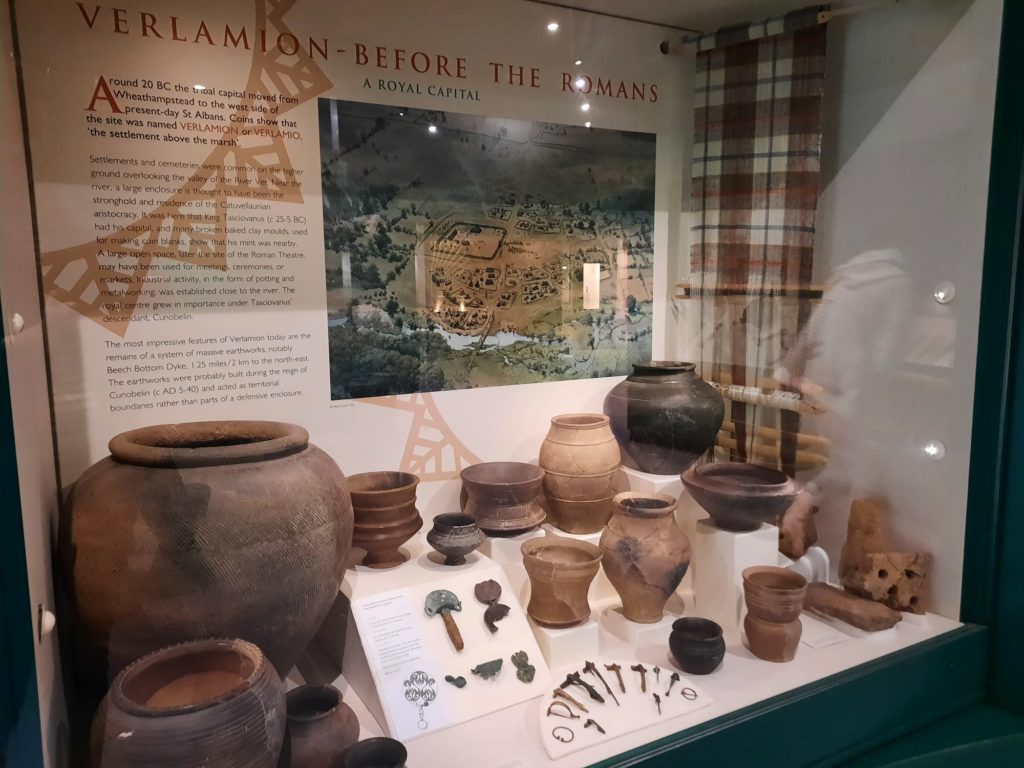
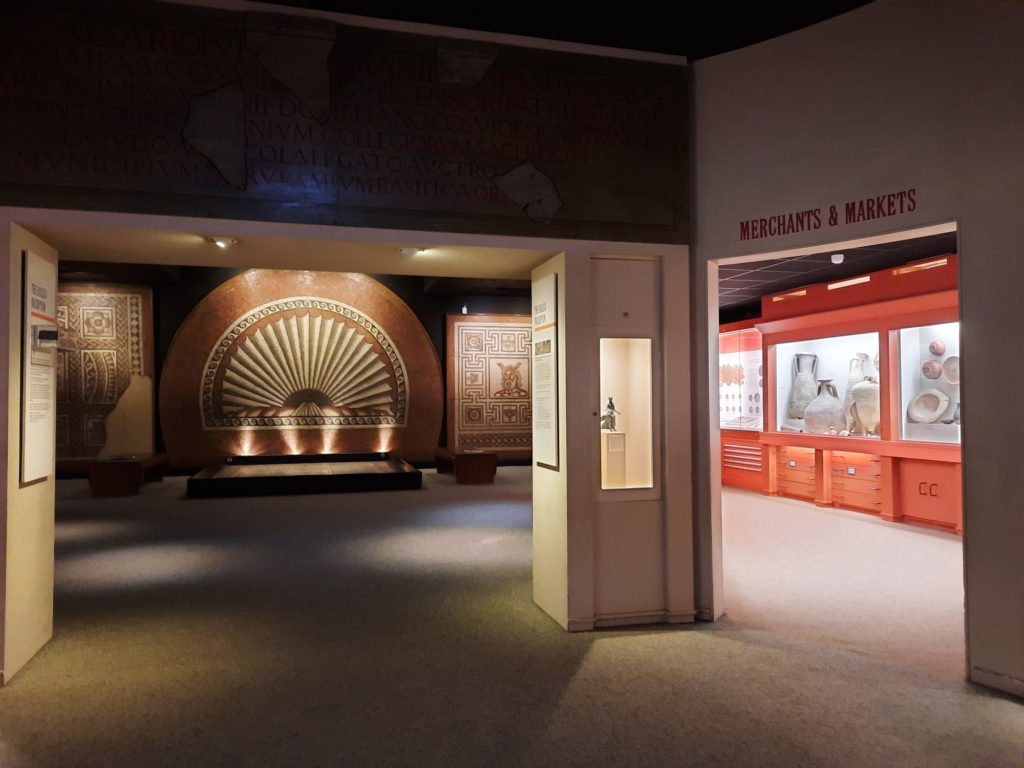
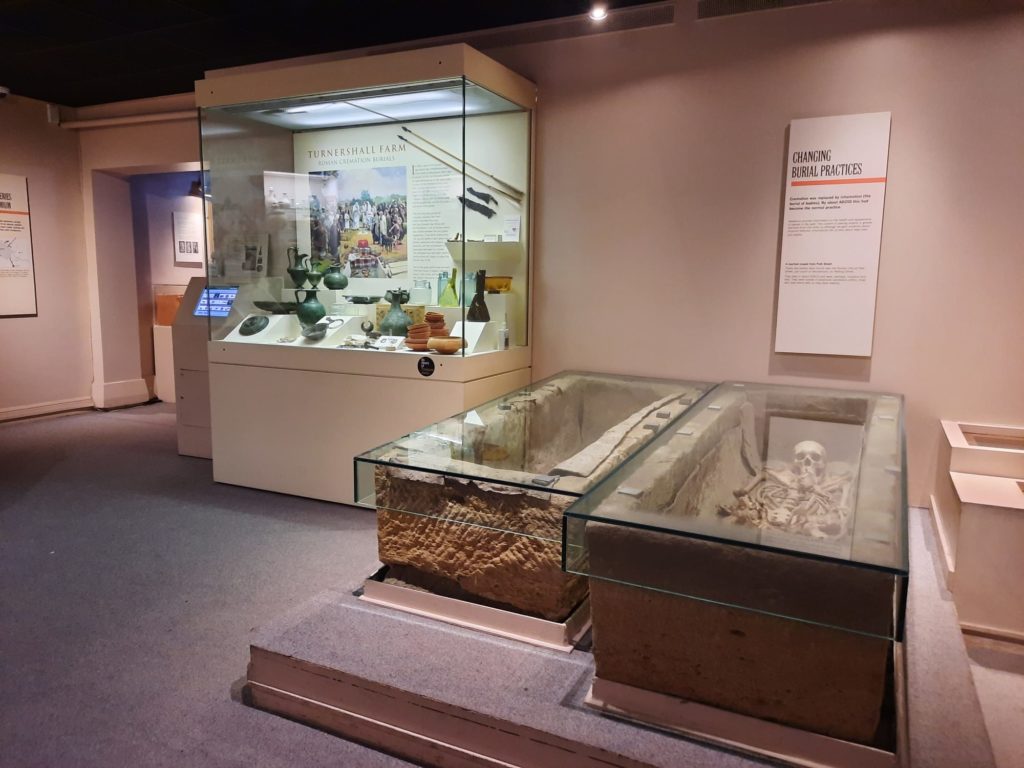
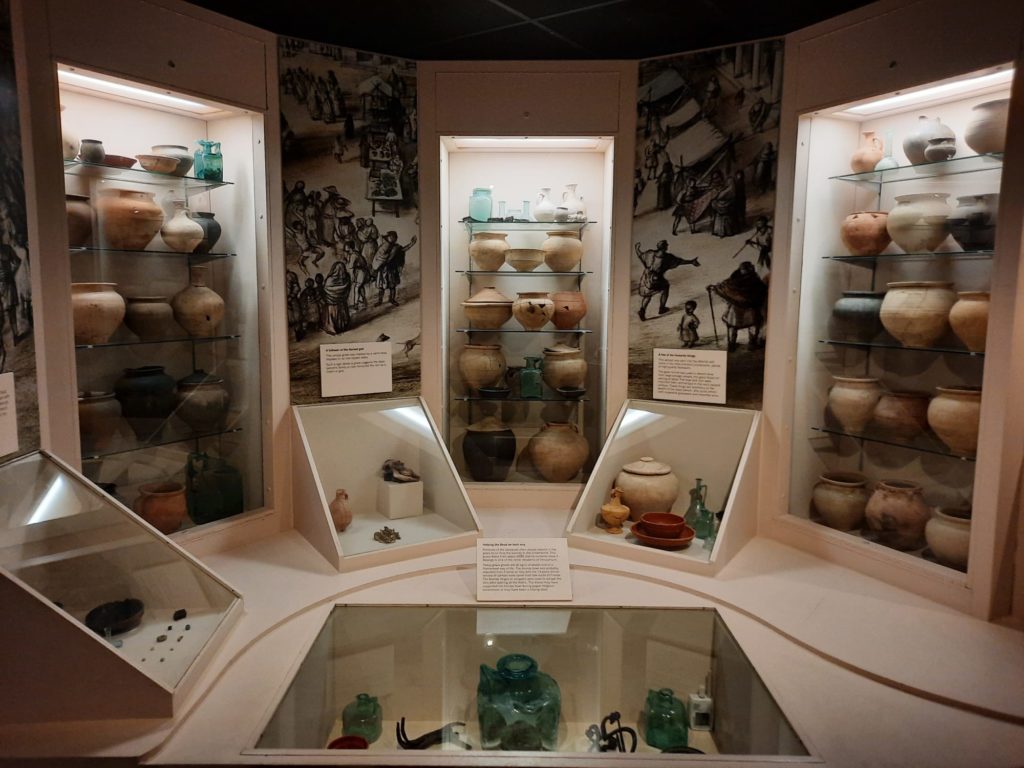
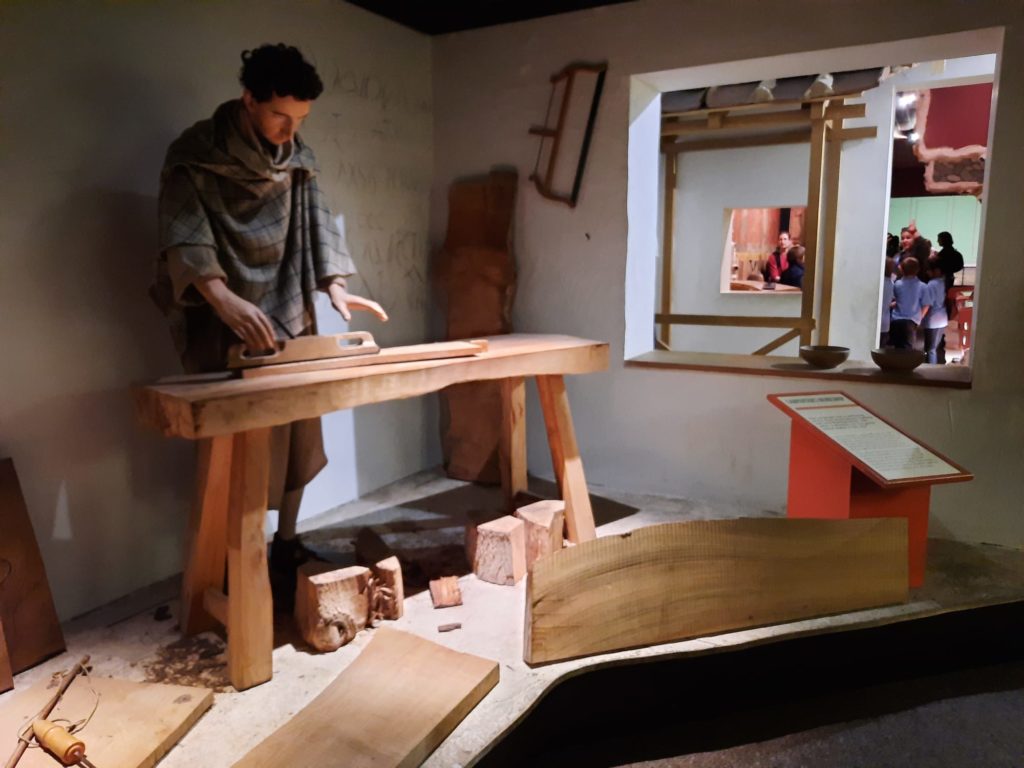
Verulamium Museum
Esteemed archaeologist Mortimer Wheeler (and his wife Tessa Wheeler) made significant discoveries at St Albans/Verulamium in the 1930s. It was after this date that Verulamium Museum was established. At the edge of Verulamium Park, it’s on the site of the Roman city. In the 1990s an extension project provided additional space, and also an opportunity to excavate under the museum itself. It’s part of St Albans Museums along with St Albans Museum + Gallery in the former town hall.
As modern St Albans is not in quite the same location as Verulamium, the museum is a reasonable walk from the train station (St Albans Abbey station is a little closer but not as good when coming from London). However, it’s easy to detour past the cathedral and a couple of Roman sights in Verulamium Park on the way there, so no hardship.
Your first decision upon entry is whether to buy a joint ticket or one just for the museum. My museum buddy (in this case the Salterton Arts Review’s mother) and I did the former, which I recommend. The joint ticket also allows entry to the nearby Roman theatre, on which more later.
Verulamium Museum positions itself as the museum of everyday life in Roman Britain. As such, the emphasis is on how people lived and worked here millennia ago. There are recreations of shops and rooms, as well as mannequins of Roman citizens of Verulamium to greet you. There’s a lot to see: let’s take a closer look in the next section, after a few more images to set the scene!
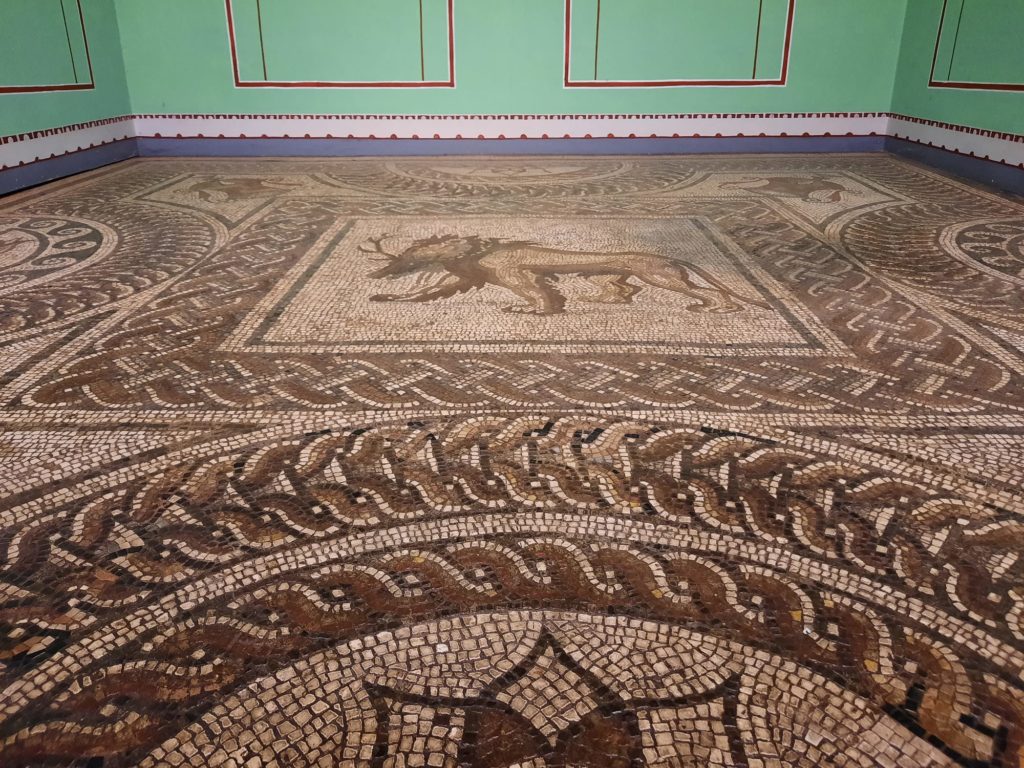
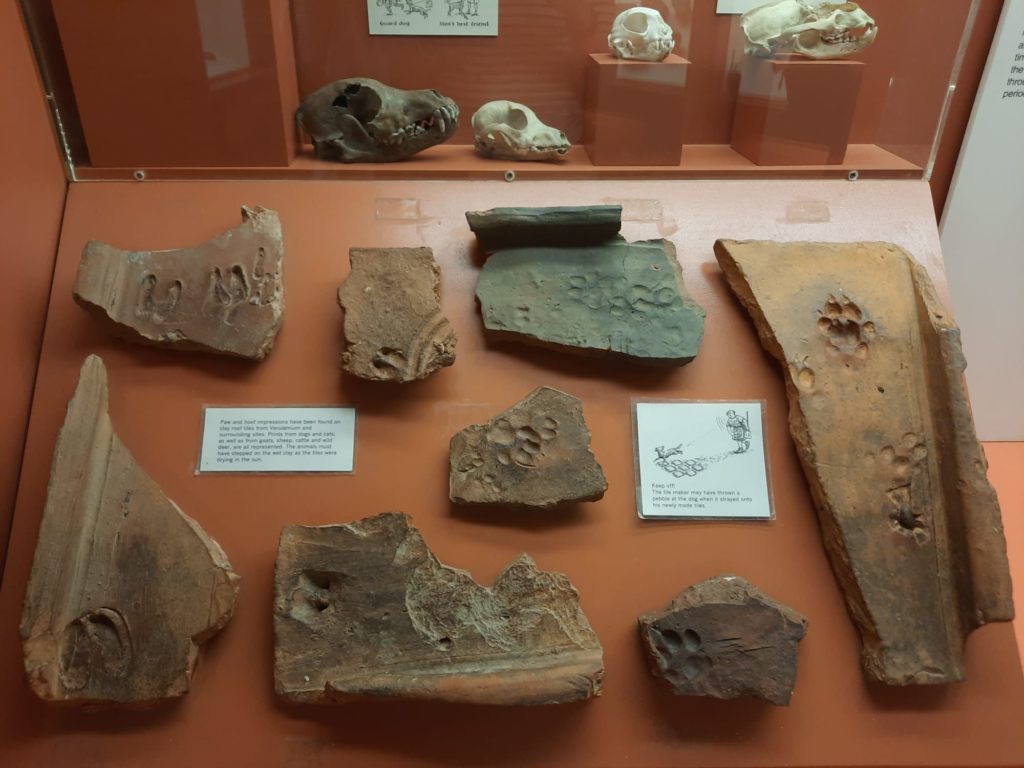
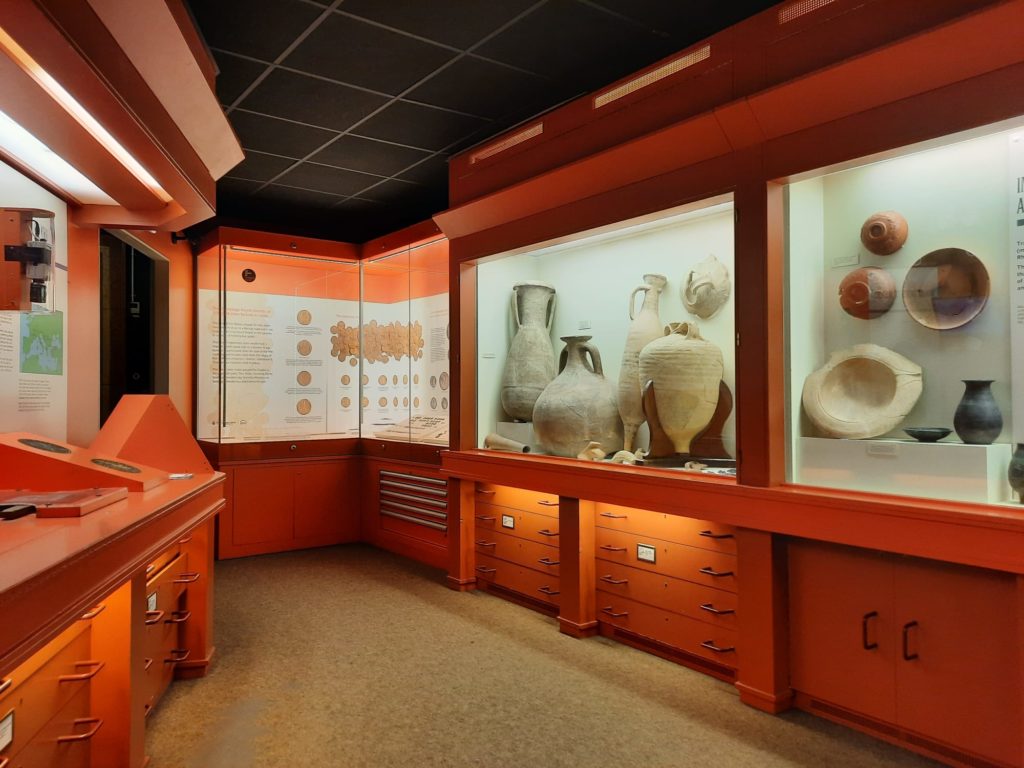
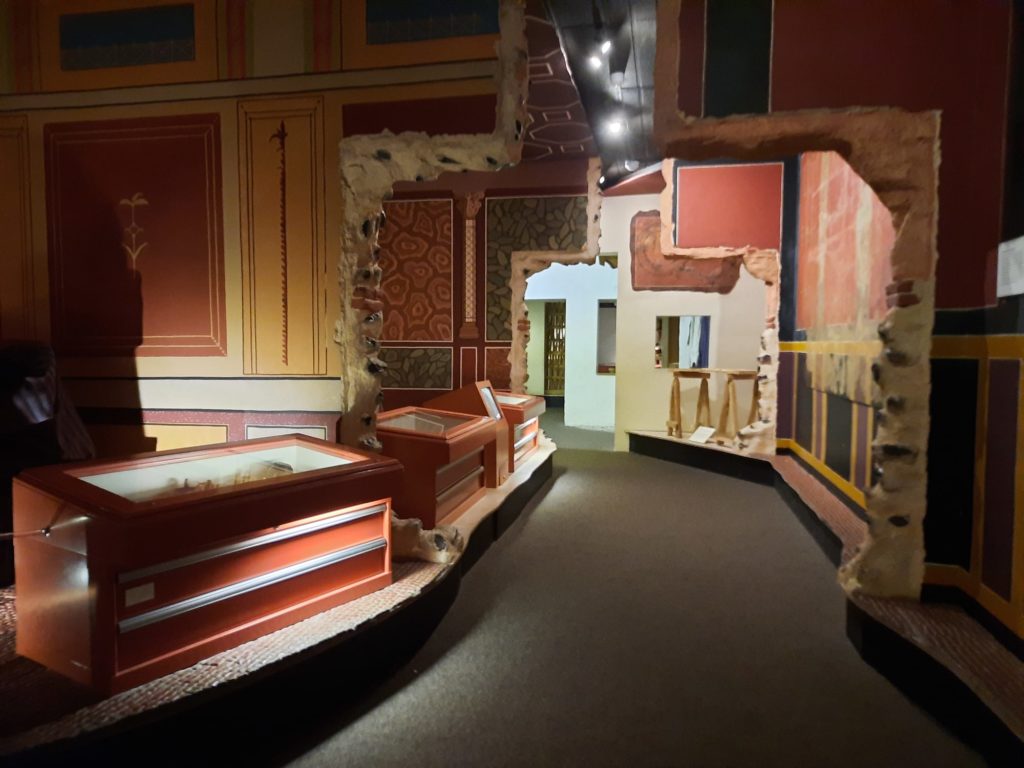
Verulamium Museum Continued
The mosaics are undoubtedly the star of the Verulamium Museum show. There are several of them: fairly large, fairly complete, and nice designs. There were clearly a number of wealthy, villa-owning types living in the area. I’m pretty spoiled, having been to the Bardo Museum in Tunis, but I think the claim to have some of the best mosaics outside the Mediterranean holds up.
But it is the details of everyday life which are perhaps the most charming. I love tiles with human and animal footprints, for instance, and Verulamium Museum has a great selection. You can just imagine the tilemaker’s frustration at seeing yet another deer has run across his work in progress, before deciding it will do as it’s up high and nobody will see. There’s also some interesting interpretation work to imagine the lives of Roman-era people whose remains are in the museum, although perhaps the approach to displaying human remains is not quite in keeping with contemporary sensitivities.
I particularly liked the very first space within the museum. This being a museum about Verulamium, I was surprised at first to see a vitrine dedicated to its pre-Roman residents. This was an interesting addition and very informative. Also informative was the video in this space, which gives a good sense of what the Roman city was like. The museum’s layout means you can then wander at leisure to see the rest, but will need to double back once or twice. All in all very good fun: just try to avoid the times of day school groups might be in as it’s a very exciting place for youngsters.
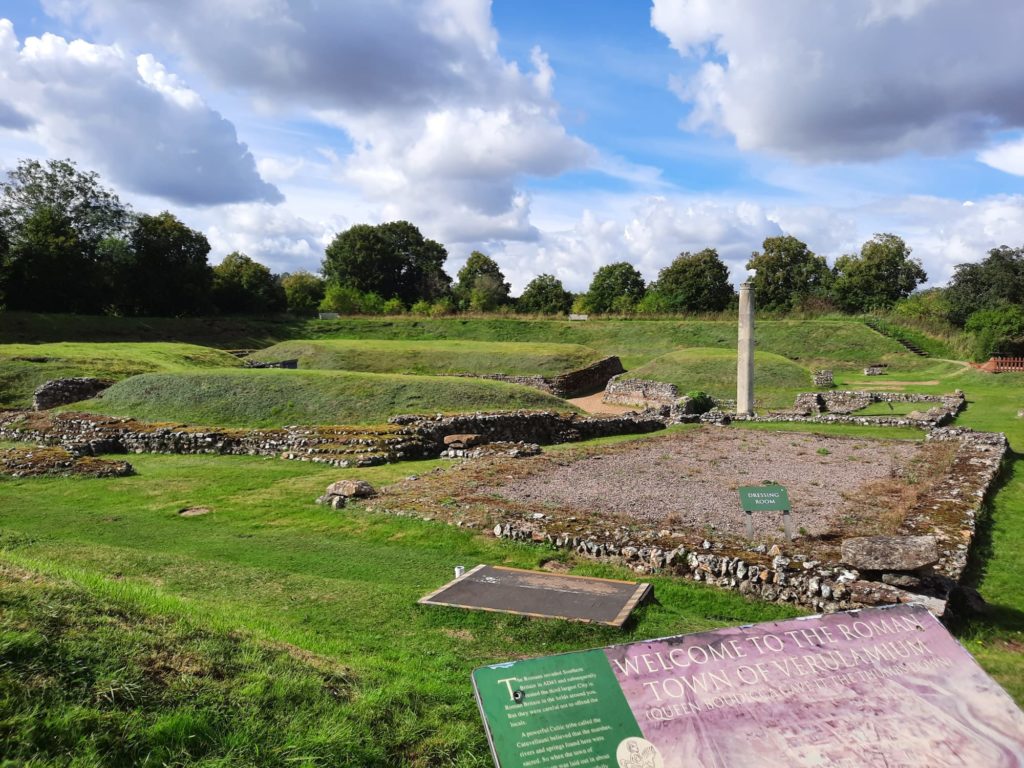
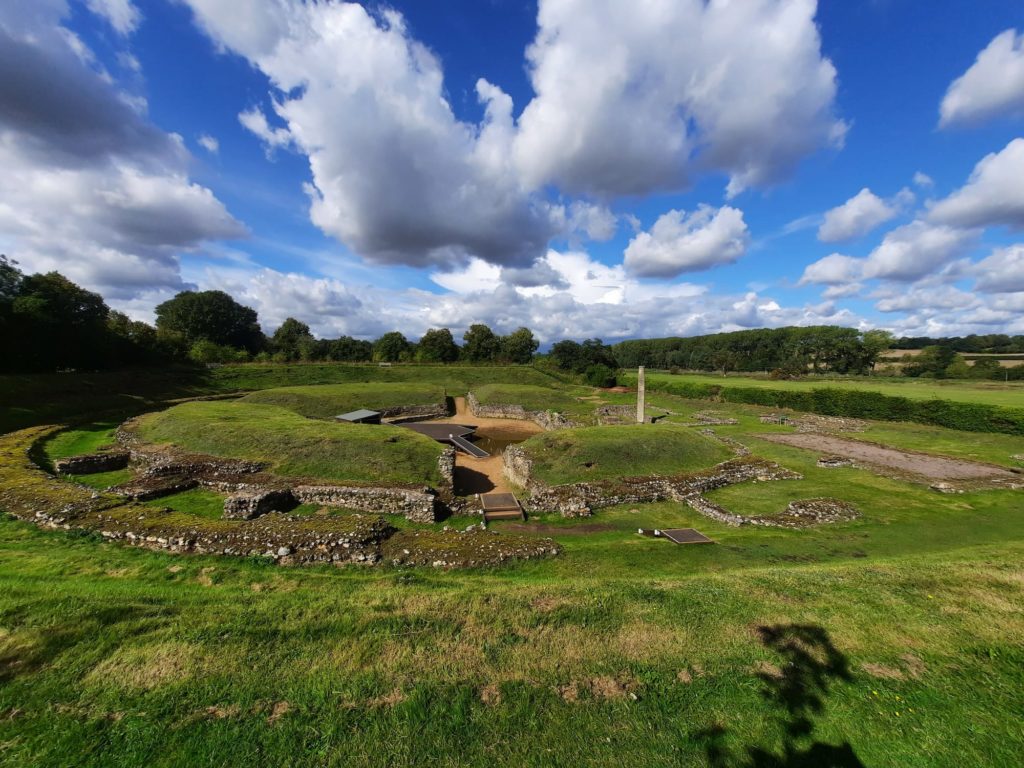
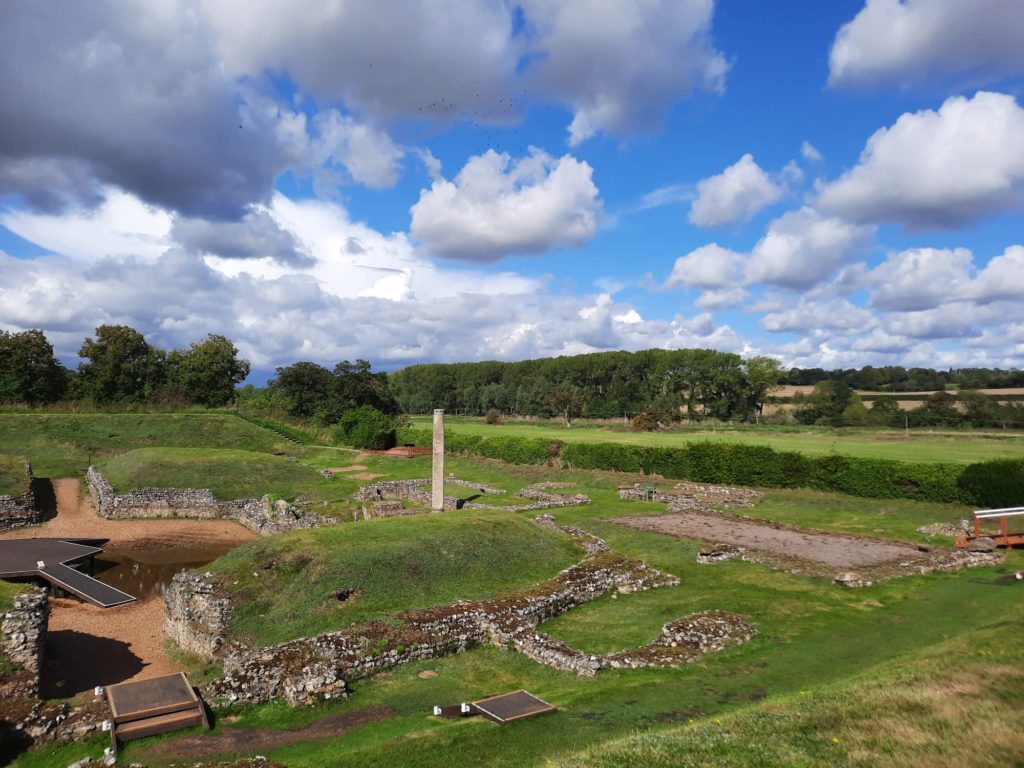
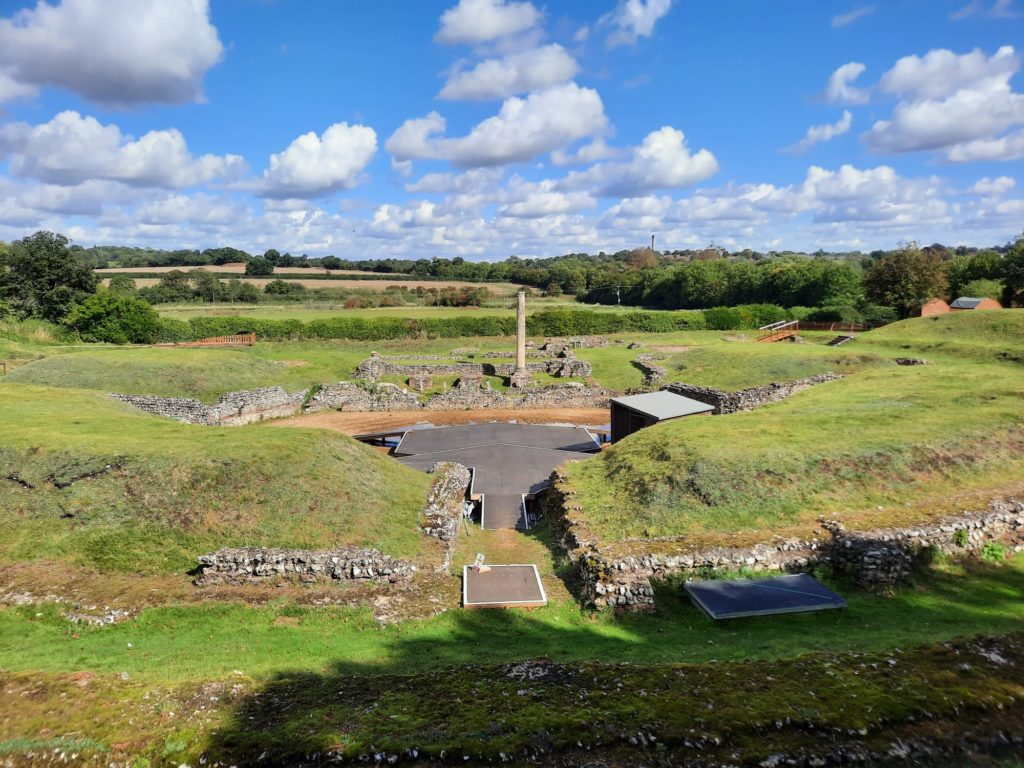
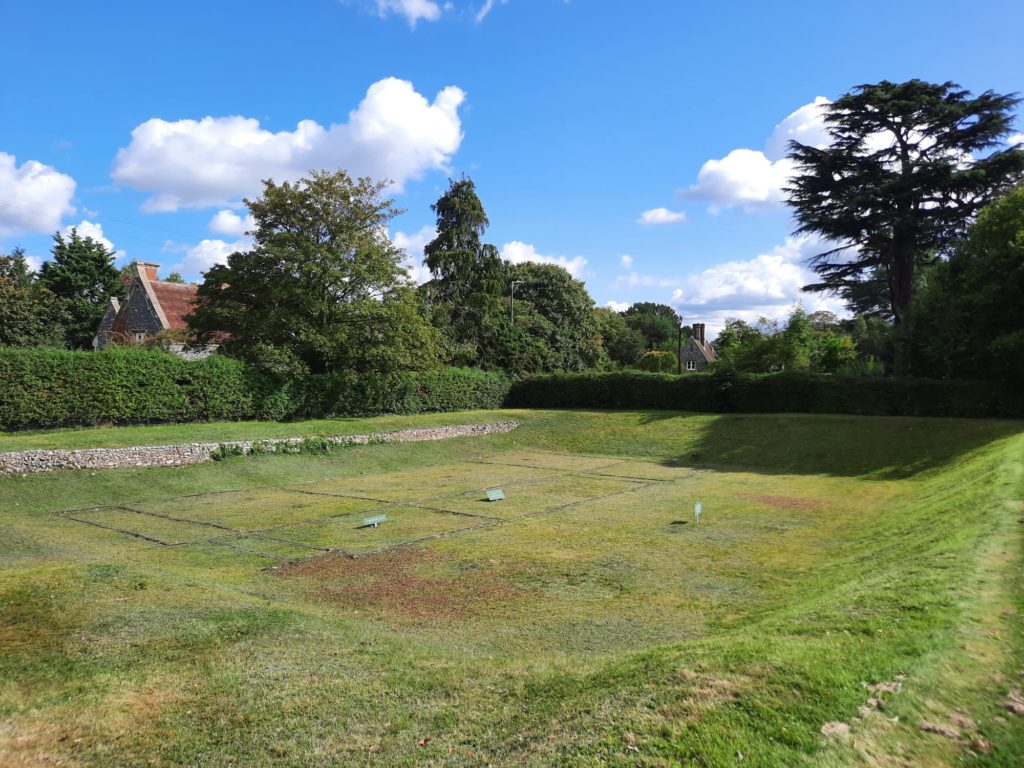
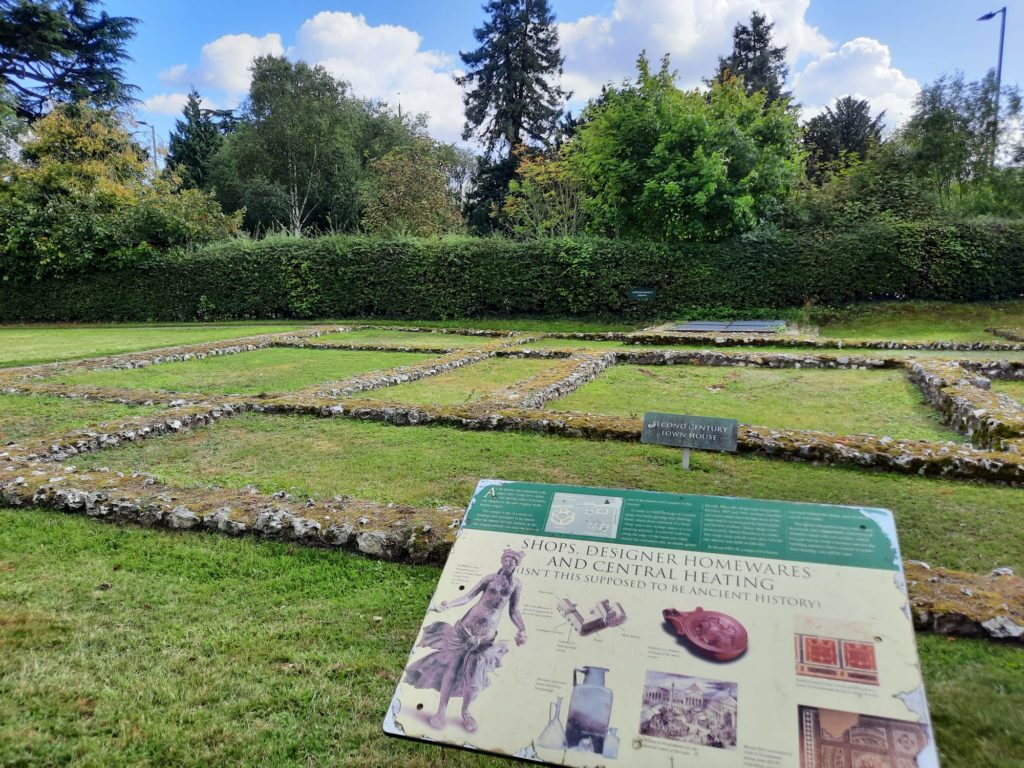
The Roman Theatre
Having already purchased our joint tickets, we next set off across St Martin’s churchyard to the Roman Theatre. You can alternatively visit just the theatre and not the museum: each has their own ticket booth. The Roman Theatre is on private land, part of the Gorhambury Estate. There’s apparently more to see on the Gorhambury Estate than just the theatre: you can also see the ruins of ‘Old Gorhambury’, Sir Nicholas Bacon’s house (free to visit and managed by English Heritage). Gorhambury House has limited public openings as its under renovation. I didn’t know about Old Gorhambury at the time or would have gone to see it!
But back to the theatre. It’s apparently unique in Britain, being a theatre with a stage rather than an amphitheatre. The people of Verulamium used it for things like religious rites, dancing, fighting and shows with wild beasts. The first excavation here was in 1847, followed by another in 1935. Excavations in the 1950s and 60s uncovered a row of shops, a villa and a shrine.
The theatre is relatively quick to visit, but will be interesting to archaeology fans. The refurbishment of the site in 2014 means it’s easy to get around, and has modern (if now faded) information panels. I would like to go back at some stage for its summer open air festival.
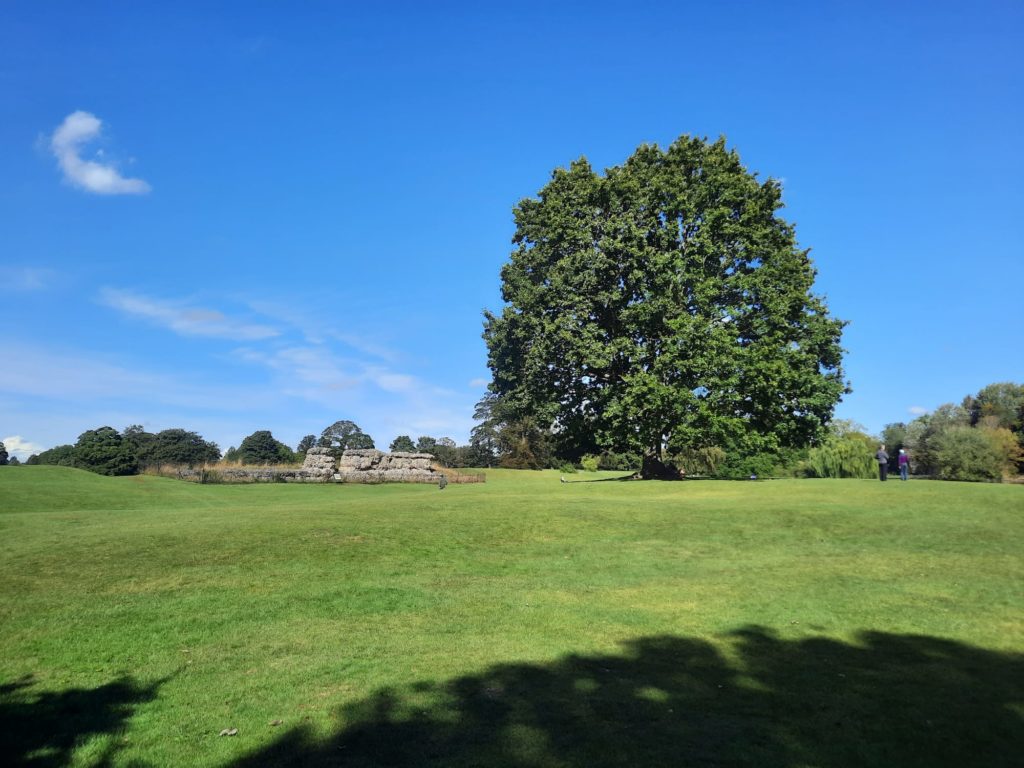
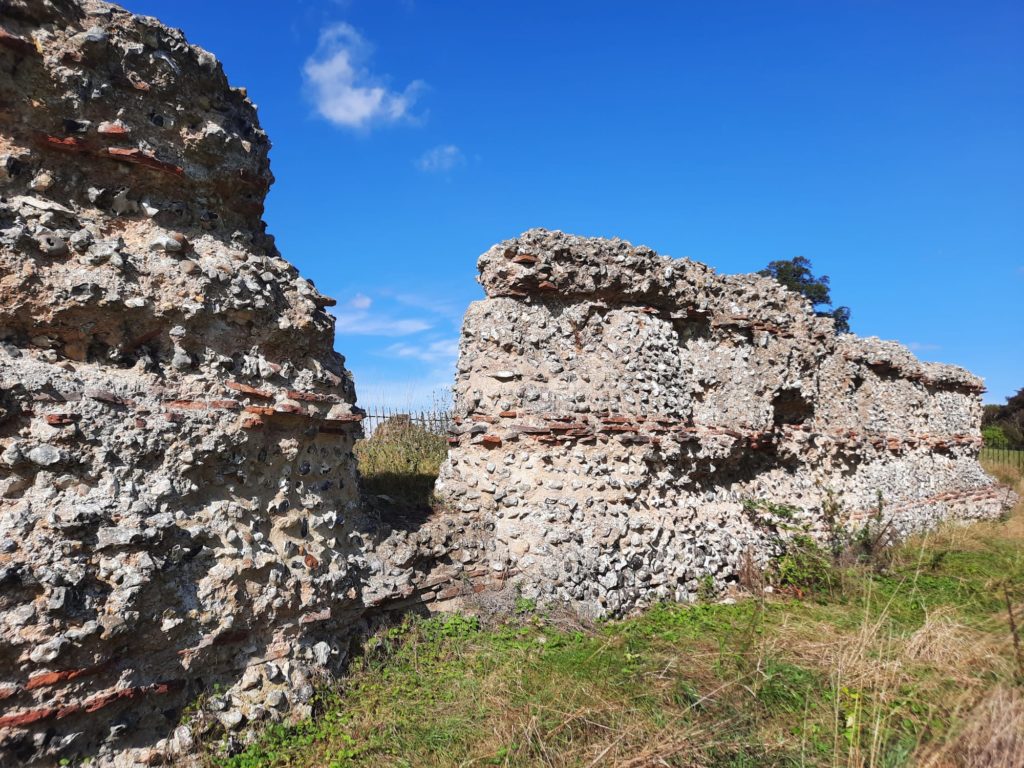
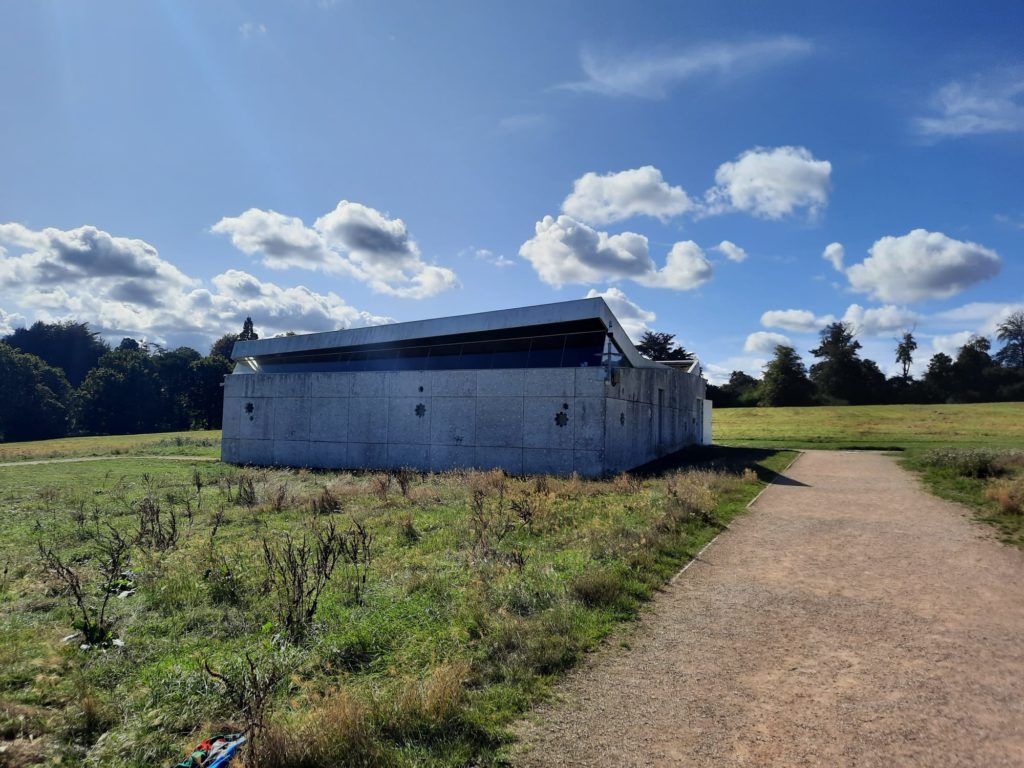
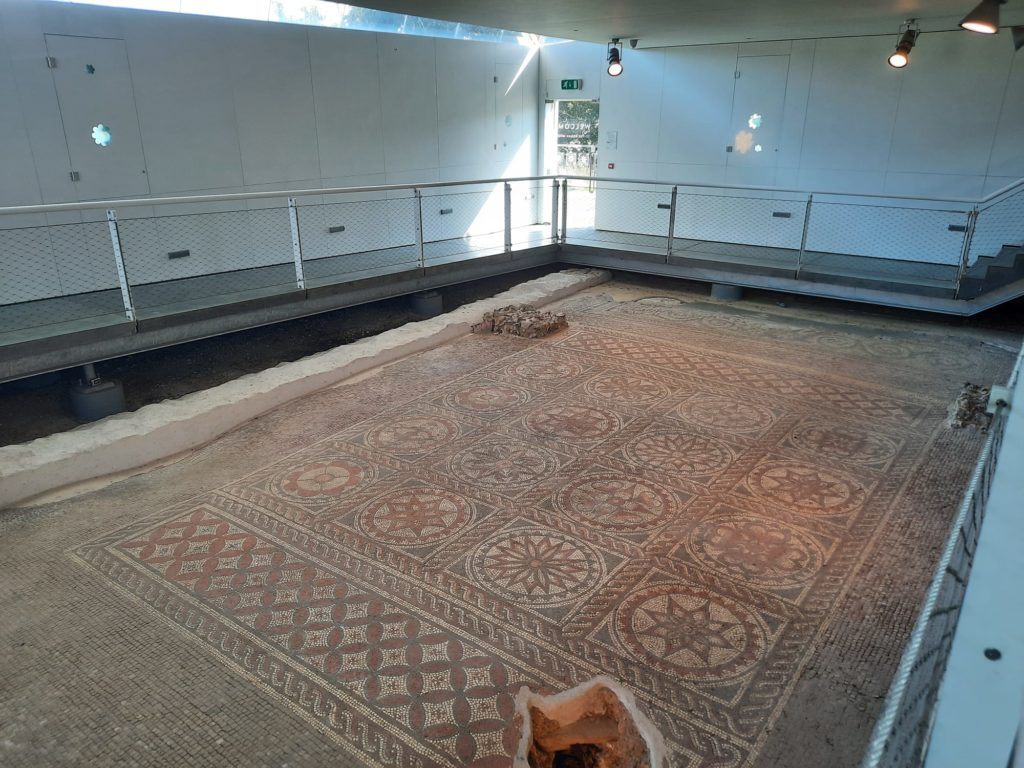
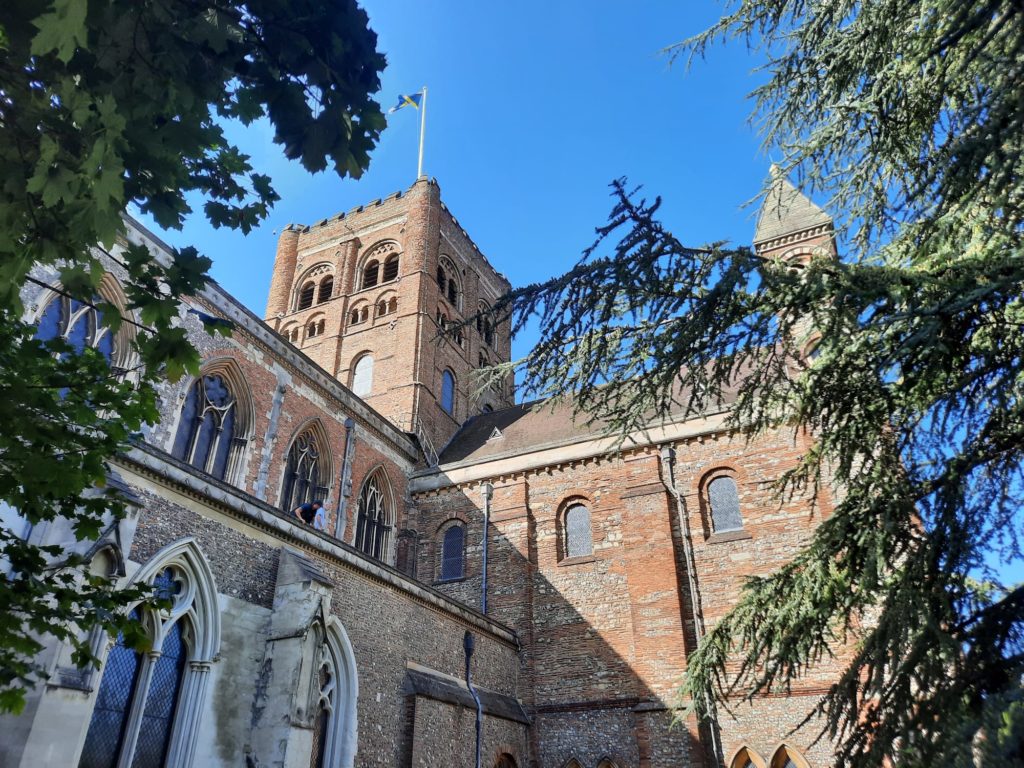
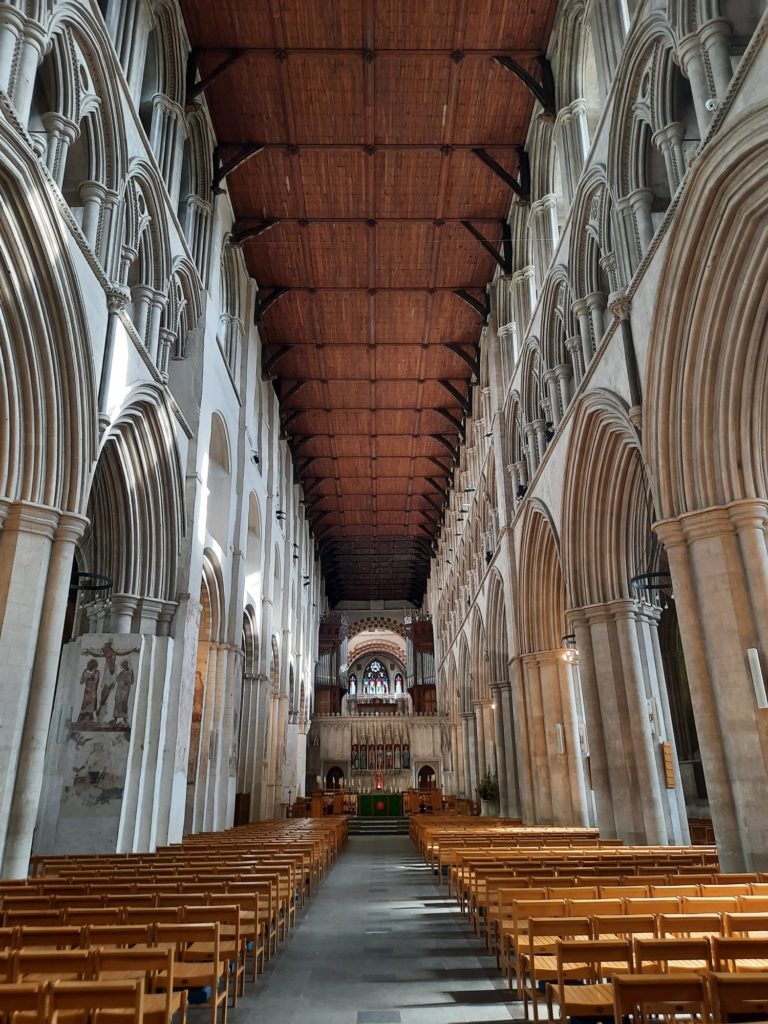
Other Roman (Or Roman-Adjacent) Sights In St Albans
As mentioned above, there’s more than just Verulamium Museum and the Roman Theatre to see in St Albans. Below are the other sights I took in during a day trip from London: you can find a couple more sections of Roman wall if you really try but these are the main ones.
- Verulamium Park: essentially this is the site of the Roman City. Today it’s a large, pleasant park, with many interesting facilities and features including the following two bullet points.
- Roman Wall: we saw a section in… you guessed it… Verulamium Park! See the first two images above: the building technique is recognisably Roman (comparing it to the Londinium example near Tower Bridge Station). If you want to track down another section of wall and the outline of a gate there are some clues in this post. I was fine with what I saw in the park.
- The Hypocaust: what a great public asset to have this available to visit for free! A hypocaust is Roman central heating, powered by hot air and ducts under the floor. This example, still in situ, has beautiful geometric mosaics. You can see it in its own modern visitor centre in Verulamium Park. It was part of the Wheelers’ discoveries in the 1930s. See images 3 and 4 above.
- St Albans Cathedral: alright, alright, I know a Norman cathedral is by definition not a Roman sight. But hear me out. If you’re going to St Albans and to Verulamium Park you will likely stop at the cathedral. And it’s really quite interesting to see the reused Roman building materials. It was originally an abbey, has some very old wall paintings, and also the longest nave of any cathedral in England. It stands near the supposed site of Verulamium resident Saint Alban’s martyrdom. See images 5 and 6 above.
So there you have it! I hope you’ve enjoyed this tour of Verulamium Museum and the Roman sights of St Albans. It’s definitely all doable as a daytrip, with some time left over for lunch and a spot of shopping, or a visit to St Albans Museum + Gallery.
If you see this after your page is loaded completely, leafletJS files are missing.

